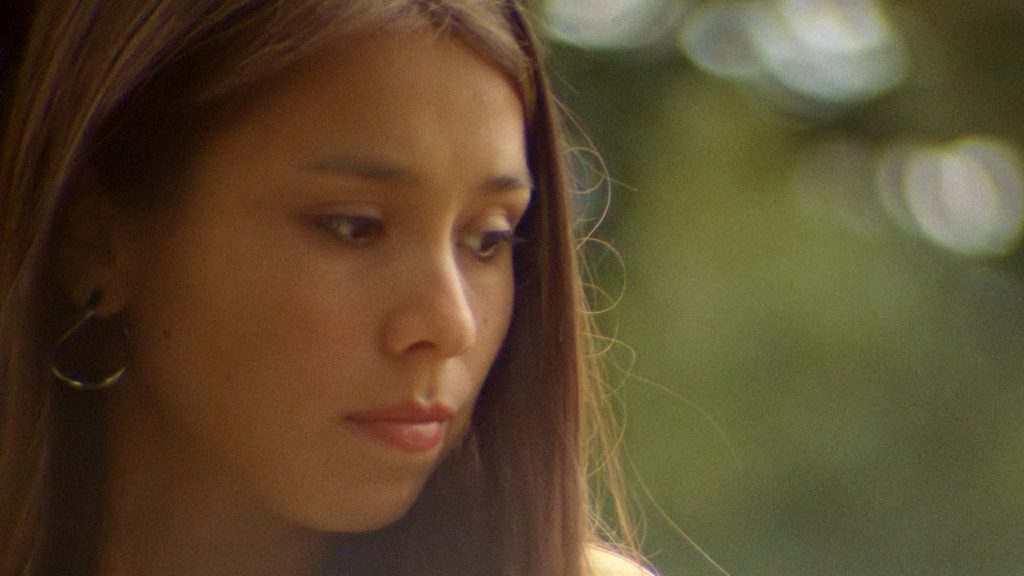DP Jannik Tesch Talks About Shooting Feature Films with 50 Year Old Angénieux Zoom Lenses

The young generation of cinematographers is after old vintage lenses and particularly Angénieux ones. Because our lenses last for decades, they are among the most used in this new trend. DP Jannik Tesch tells us why he is a big fan.
When I was asked in 2019 by writer-director Emilie Girardin to shoot her road movie “The Last To Leave Are The Cranes” with a very low budget and in a semi-documentary style, two aspects were important to me regarding the choice of lenses: The first aspect concerns the way of working. Since the crew would be reduced to a bare minimum of director, DP and sound, changing lenses was out of the question for me, so using zoom lenses was a natural choice. This is by no means a compromise for me, as I love to use zooms because they fit my methodology of finding a shot. For me perspective comes first – that means the exact physical placement of the camera inside the scene. From that, I choose the focal length to get the desired shot size. So with a prime, if my shot size falls between two available focal lengths, I would have to move the camera again and therefore change my perspective. With a zoom however, I can keep my perspective, knowing that whatever framing I need, the zoom lens will provide me with it.

The second aspect of my choice of lenses concerns aesthetics. Since the film is about a woman’s search for her family’s origin, from which she finds out that the personal past is not fully detachable from general history, it was important that the camera also provides a glimpse into the past. So for me, it had to be vintage lenses.

After some research and testing, I very quickly settled on the Angénieux zooms of the 60s and 70s that were built for Standard 16mm celluloid film. I then purchased a pre-owned 1970 Angénieux Zoom Type 10×12 B and this was the only lens I shot the whole film with. It ranges from 12mm to 120mm and as soon as I put it in front of the digital camera, it felt like a veil of the past was covering the whole scene in front of me. It was exactly what I was looking for. I was surprised how good faces, especially skin looked with it. It produces a soft, pleasing and naturalistic image – also in terms of colour. It works very well with modern digital sensors and after location scouting in Poland I was fully convinced by and in love with my new old lens.

I learned a lot about this lens during the following three weeks of shooting and later in Color Grading and when I watched the film for the first time on a big cinema screen, I was amazed. I then acquired three more Angénieux lenses to cover more focal lengths in potential future projects.
When Emilie asked me in 2020 to shoot her next feature film “One Dances, The Other Doesn’t”, we instantly knew we wanted to shoot on the vintage Angénieux again, even though this time the film didn’t have a story about the past, but a very contemporary one about motherhood. But these lenses have such a beautiful inherent look that we went for them again without hesitation.

My most used lens is the Angénieux Zoom Type 6×9.5 B which ranges from 9.5mm to 57mm and is a little faster and has a better close focus distance than the 10×12 B. Their look is nearly identical and they complement each other very well. I also started equipping them with gear rings, step-up rings, custom lens supports and magnetic filter holders, to fit in production environments with more crew. Additionally I used the Angénieux Zoom Type 20×12 B, which covers 12mm to 240mm, because we wanted to have some scenes with very long on-screen zooms. And the last asset in my Standard 16mm lens set is the Angénieux Type R7 5.9mm wide-angle lens, mostly for car interiors and wide city panoramas.

With this set of four lenses and a combined focal range from 5.9mm to 240mm, we finally shot “One Dances, The Other Doesn’t” in 2022. The only necessary servicing was fixing some screws and re-oiling the aperture blades of one of the lenses by a lens technician and we were ready to shoot! During the shooting I never had a problem with the mechanics or optics of the lenses, even though they are over 50 years old and had been used before. It’s amazing how resistant these lenses are built.

After having shot two feature films on these 16mm Angénieux zooms, I decided to get the equivalent lenses for 35mm format. They have the same amazing look but cover a larger sensor area, meaning more resolution and the possibility of a shallower depth of field, if desired. I got the Angénieux Zoom Type 10×25 T2 and the Angénieux Zoom Type 6×20 LA2 which are the 35mm equivalents of the 10×12 B and the 6×9.5 B respectively. I can’t wait to use them on the next project!




